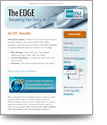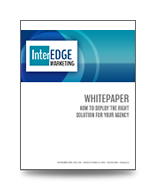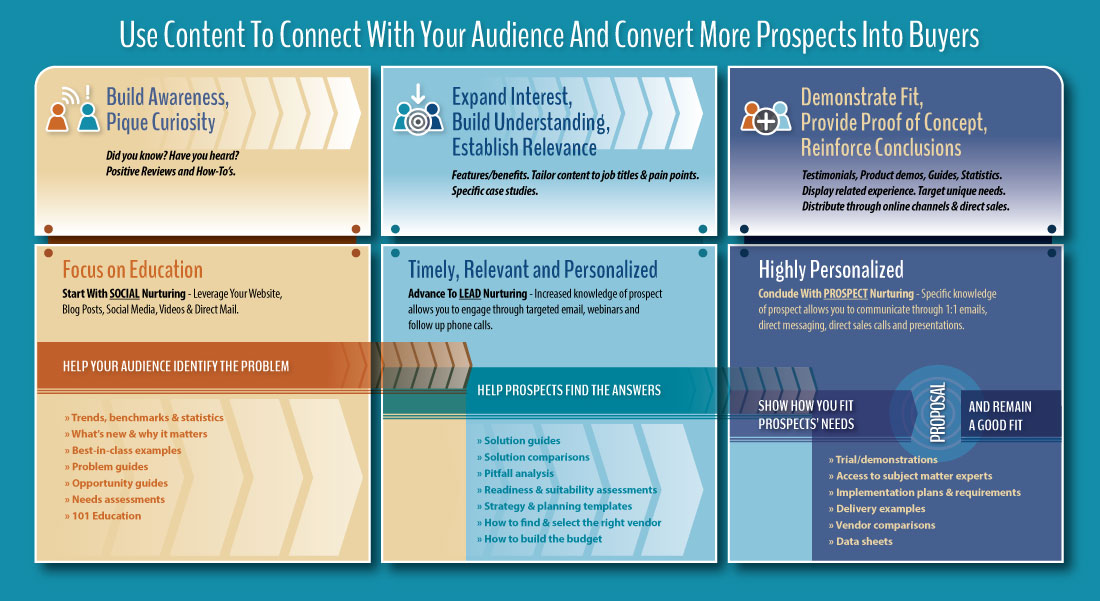
Information. It's the reason customers and prospects visit you online. From trivia to specific business details, we get answers to questions from our desktop and smartphone. But whether a user knows you well or just discovered you for the first time, website first impressions dictate their next step.
In fact, your design and navigation have only a few seconds to convince your audience to dig further. Unclear or hard to find information turns a new opportunity into a lost lead.
Website First Impressions
Numerous factors influence website first impressions. But, ultimately, user experience rules:
- Design
- Unique Value Proposition
- Navigation Headings
- Capabilities
- Contact Us Information
- Loading Speed
- Links
Improving each component increases user engagement. And, as that connection increases, your audience learns more about your company and your services. Further, when users have a positive experience after visiting your site, they depart with a favorable opinion of your brand.
So, don't underestimate the impact of user experience. Instead, evaluate your site. How does your website first impressions rate? Click here for a detailed website evaluation to help you get started.
1Design
Online perceptions shape audience attitudes about your business. A well-designed site means that people stick around and explore further. Conversely, a poor website design and user experience stimulate rapid rejection. And, for the majority of your audience, it's the number one factor in deciding the credibility of your business.
Rate Yourself
Old outdated images, flash splash pages and comic sans type equate to a 70s leisure suit. Implement regular design updates to create positive website first impressions.
2Unique Value Proposition
What sets your company apart from competitors? Not all website visitors know. But, a unique value proposition provides that definition. Without it, your audience can only guess. And, this recent web usability report found that the majority of visitors don't bother. Instead, they move to other sites.
Rate Yourself
Do you include a statement that details how you solve customers' problems, improve their situation and define the specific benefits you deliver?
3Navigation Headings
Delivering positive website first impressions increases the time a prospect will spend learning about you. And, 47% of the time the navigation menu informs and guides their next step. Too many headings or confusing headings will terminate their stay.
Rate Yourself
Keep navigation headings at seven or fewer. Plus, descriptive names, such as Direct Mail Products, instead of just the generic "Products" term, help a user quickly understand what you do and where to click to learn more.
4Capabilities
As user engagement increases so do their interest in your capabilities. Your audience wants easily accessible and clear details on what you offer.
Rate Yourself
Is your current product and service information up to date and accurate? Does it truly represent your current product offering? Or, do you use industry or company acronyms? Moreover, does it describe your capabilities in a way the average user can understand?
Using detailed technical information peppered with industry acronyms will derail most users. Determine the type of information your audience values and include those details.
5Contact Us Information
After products and services, next on the user priority list is contact us information. Essential elements include phone number, location address and an email or form that makes obtaining additional information easy.
Rate Yourself
Is your contact information highly visible and placed in multiple spots allowing a user easy access? And, does it contain the key information your audience needs including the phone number, address, contact method, map and maybe even directions for out of town visitors? Add bonus points if you provide an FAQ document!
6Loading Speed
You'll lose 40% of your traffic if your website takes too long to load. What's too long? It depends on your audience and industry. However, strive for less than two seconds.
Rate Yourself
Test your site with Google Page Speed tools to determine your website loading speed and improvement opportunities.
7Links
Internal and external links provide driveways to other valuable information that can add clarity and understanding to your content. This improves engagement and builds the user's understanding of your capabilities.
However, websites with broken links change that helpful driveway into a highway to hell - for you. Broken links disrupt interactions.
Rate Yourself
Use the Google Webmaster Tools to identify any broken links and FIX them. A custom 404 page creates a boomerang affect taking users back to your site instead of bouncing off of it. Plus, you guide the user to another page that satisfies their need.
Perform A Self Audit
In reality, these findings aren't surprising. When searching for information we expect a friction-free intuitive user experience. But, we often don't apply this same lens to our own website. So, schedule a time to evaluate your site. Rate it in each of the above categories. Define and make changes that elevate your website first impressions.
If you lack the internal skill set to make the necessary changes, hire an outside company to perform an audit. InterEdge Marketing and other organizations provide this service.
When you take these steps it will improve the user experience and your audience understanding. And, when that happens, you generate additional leads and sales.



 Insight Delivered Directly to You Interesting topics, great offers and free marketing tools.
Insight Delivered Directly to You Interesting topics, great offers and free marketing tools.

